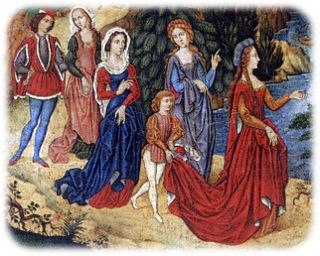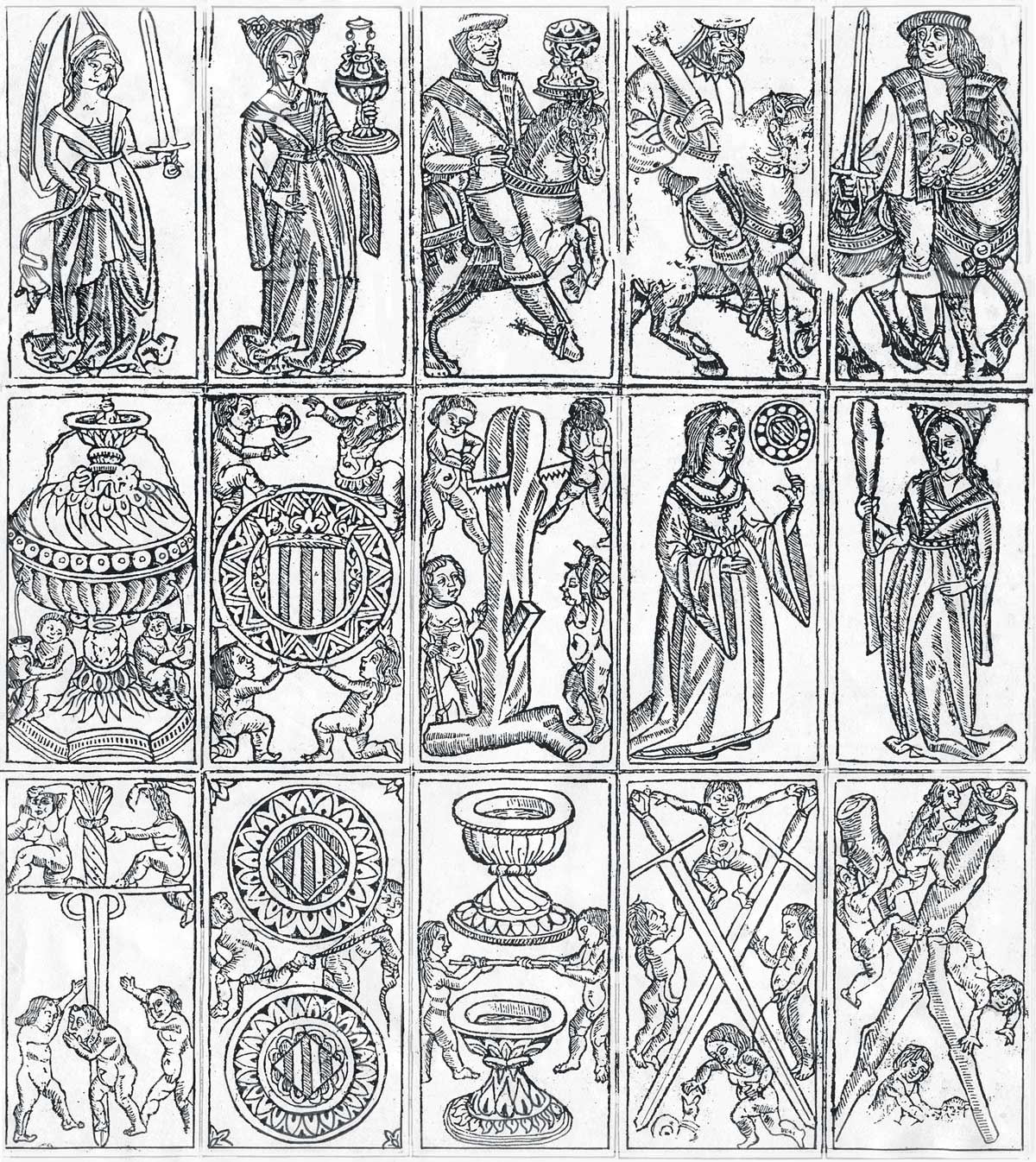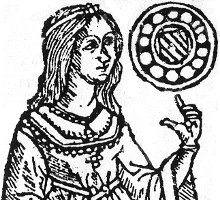Gothic Spanish-suited cards
These cards may be a typical example of early 'standard' Spanish playing cards, maybe from before Columbus sailed for the 'New World' which were imitated by German engravers who wished to export their wares back to Spain.
Gothic Spanish-suited cards, 15th century

Gothic Spanish-suited cards discovered in the cover of a book published in 1519; uncut sheet showing 15 cards. Some time may have elapsed between the rejection of the sheet by the playing-card printer, its being made into board and the board finally being drawn from stock for use by the bookbinder.
The style and costume of the figures places it between 1460 and 1470. All the ‘sotas’ are female, standing three-quarter profile, upholding their suit symbols. The clubs are hefty tree branches - not slender rods as in Italian cards. The numeral cards have been decorated by the addition of extra motifs which are not essential to the design, i.e. cavorting putti, and in this and other respects they are related in design to the pack by the Oberdeutscher Stecher, engraved in the 1490s, and also the uncut sheet by the Master of the Banderoles, engraved in the third quarter of the fifteenth century, and which also feature naked children deporting themselves. The coins all feature the shield of Aragon.
These early Spanish playing cards, maybe from before Columbus sailed for the New World, contain female maids, or ‘sotas’, which are seen in other early Catalan cards as well as Portuguese cards.



Above: uncut sheet showing fifteen playing cards, 15th century. Discovered in the cover of a Catalan manuscript of 1519 (discovered by Enrique Claudio Girbal). Museu Nacional d'Art de Catalunya (Barcelona). Size of original: 263 x 296 mm.
Looking at the layout of the cards on the sheet, we note that the woodblock had five cards in each row, and that a missing row at the top might have contained the four kings and a cavalier. If this was the case, then it is still unclear whether the complete pack might have contained 48 cards, 52 cards or some other number.
See also: Spanish Playing Cards • Phelippe Ayet • Baraja Morisca • History of Playing Cards • Master of the Banderoles • Seville 17th Century • Spanish National Pattern • The Money Bag pattern • Pedro Bosio • Rotxotxo Inventories • Navarra XVII Century • Quercia y Possi • Gandarillas • Naipes Artiguistas • Macharaviaya • Francisco Flores • 16th Century 'Rimac' Cards • Joan Barbot • Spanish-suited playing cards made in Germany.

By Simon Wintle
Member since February 01, 1996
I am the founder of The World of Playing Cards (est. 1996), a website dedicated to the history, artistry and cultural significance of playing cards and tarot. Over the years I have researched various areas of the subject, acquired and traded collections and contributed as a committee member of the IPCS and graphics editor of The Playing-Card journal. Having lived in Chile, England, Wales, and now Spain, these experiences have shaped my work and passion for playing cards. Amongst my achievements is producing a limited-edition replica of a 17th-century English pack using woodblocks and stencils—a labour of love. Today, the World of Playing Cards is a global collaborative project, with my son Adam serving as the technical driving force behind its development. His innovative efforts have helped shape the site into the thriving hub it is today. You are warmly invited to become a contributor and share your enthusiasm.
Related Articles

French Revolutionary cards by Pinaut
Seven cards from a French Revolutionary pack by Pinaut featuring characters from classical antiquity...

Tarot de las Coscojas
Historical playing card design, tarot symbolism and an almost psychedelic medieval surrealism.

Tarot de Valverde de la Vera
A series of 24 surrealist engravings by Mexican artist Claudio Favier in which archetypal Tarot alle...

Baraja de Juan Martín Zamorano
Deck inspired by El Pendón de los Zamorano, a military pennant dating from 1501, published by Priego...

Heráldica Castanyer No. 16
Strange variant of international pattern cards for poker or bridge.

Fantasy Spanish-suited deck
Fantasy Spanish-suited deck by Bertschinger y Codina, Barcelona.

Trappola cards from Poland
Trappola cards published in Warsaw by J G Du Port during the 18th century.

Bertschinger y Codina - Cartes Françaises
French ‘Paris’ pattern made by Bertschinger y Codina, Barcelona, c.1850.

Braulio Fournier
Baraja Nº 1 produced by Braulio Fournier, Burgos, c.1868.

Pirritx eta Porrotx
Happy Families card game from the Spanish Basque Country.

Naipe Vizcaino
‘Naipe Vizcaino’ designed by Javier Urkiri and published by Industrias Gráficas Castuera and the Caj...

Spanish pattern by Eugène Boisse
Spanish pattern published by Eugène Boisse, Bordeaux.

Baraja Turística del País Vasco
Basque poker deck of 55 cards published by Fournier with scenic views of the Basque Country.

Baraja Vasca
Spanish Basque Country deck with original drawings by María Isabel Ibañez de Sendadiano.

Baraja Cultura Española
ASESCOIN pack for 2022 designed by M.A. Corella featuring famous Spaniards and notable buildings.

Laurenzo Propagine
Spanish-suited cards made in Italy by Laurenzo Propagine.
Most Popular
Our top articles from the past 28 days

